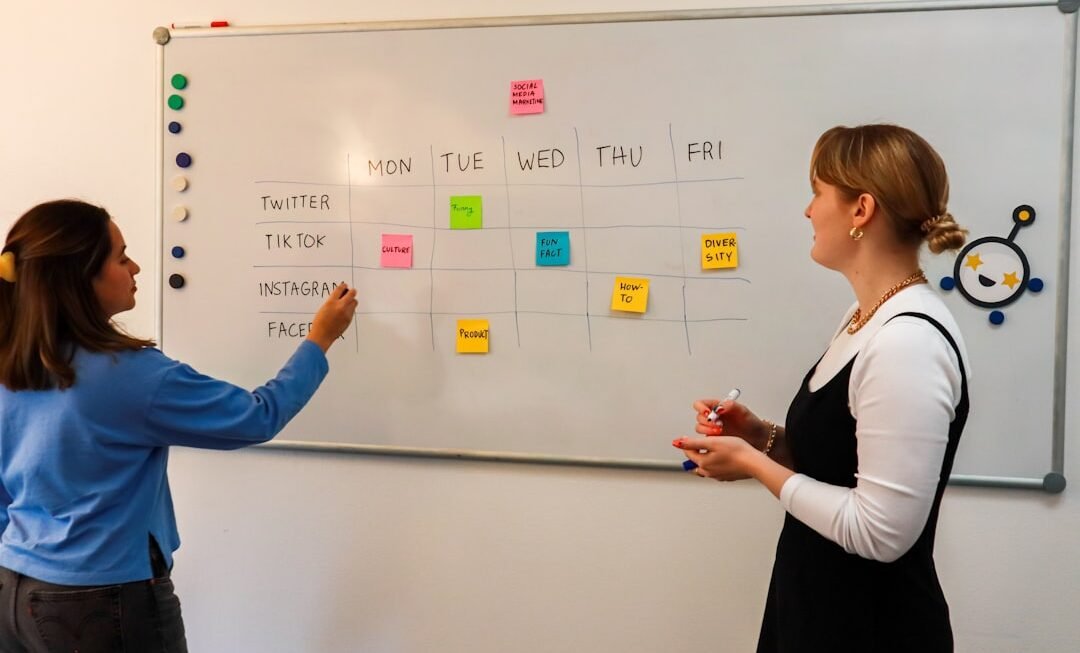Personalized learning paths are a key component of modern education, designed to address the individual needs and learning styles of each student. This approach tailors the educational experience to the specific strengths, weaknesses, and interests of learners, potentially improving student engagement and academic outcomes. Personalized learning allows students to progress at their own pace, ensuring thorough understanding of material before advancing to more complex concepts.
This method also encourages students to take responsibility for their education, promoting autonomy and self-motivation. Technology plays a significant role in facilitating personalized learning paths. Learning management systems and educational applications can monitor student progress, identify areas requiring improvement, and suggest customized learning resources.
These technological tools enable educators to efficiently manage individual learning paths, providing targeted support and resources as necessary. The implementation of personalized learning paths has the potential to transform education by creating a more inclusive and effective learning environment for diverse student populations.
Virtual Reality and Augmented Reality Integration
Enhancing Learning through Immersive Experiences
By immersing students in realistic simulations and interactive environments, VR and AR technology can enhance learning by making complex concepts more tangible and engaging. For example, students studying history can virtually explore ancient civilizations, while those learning about biology can take a 3D tour inside a human cell.
Accommodating Diverse Learning Styles
Moreover, VR and AR integration can accommodate various learning styles and provide a more inclusive educational experience. Visual and kinesthetic learners can benefit from hands-on interactions and immersive experiences, while auditory learners can engage with interactive audio elements. Additionally, students with special needs or disabilities can access customized VR and AR experiences tailored to their individual requirements.
Creating Dynamic Learning Environments
As technology continues to advance, the integration of VR and AR in education holds immense potential for creating dynamic and interactive learning environments that inspire curiosity and critical thinking.
Gamification of Learning
Gamification is a powerful tool for enhancing student motivation and engagement in the learning process. By incorporating game elements such as points, badges, leaderboards, and rewards into educational activities, educators can create a more interactive and enjoyable learning experience. This approach leverages the natural inclination of humans towards competition and achievement, encouraging students to actively participate in their own learning journey.
Furthermore, gamification can foster a sense of community and collaboration among students as they work towards common goals and celebrate their achievements together. Additionally, gamification can be used to reinforce positive behaviors and academic progress, providing immediate feedback and recognition for students’ efforts. This can help build self-confidence and resilience in learners, as they are motivated to overcome challenges and strive for continuous improvement.
Moreover, gamification can make learning more accessible and inclusive by catering to diverse learning styles and preferences. By integrating game-based elements into educational content, educators can create a more dynamic and personalized learning experience that resonates with students on a deeper level. Gamification is a powerful tool for enhancing student motivation and engagement in the learning process.
By incorporating game elements such as points, badges, leaderboards, and rewards into educational activities, educators can create a more interactive and enjoyable learning experience. This approach leverages the natural inclination of humans towards competition and achievement, encouraging students to actively participate in their own learning journey. Furthermore, gamification can foster a sense of community and collaboration among students as they work towards common goals and celebrate their achievements together.
Additionally, gamification can be used to reinforce positive behaviors and academic progress, providing immediate feedback and recognition for students’ efforts. This can help build self-confidence and resilience in learners, as they are motivated to overcome challenges and strive for continuous improvement. Moreover, gamification can make learning more accessible and inclusive by catering to diverse learning styles and preferences.
By integrating game-based elements into educational content, educators can create a more dynamic and personalized learning experience that resonates with students on a deeper level.
Artificial Intelligence in Education
Artificial intelligence (AI) has the potential to revolutionize education by providing personalized support for students and streamlining administrative tasks for educators. AI-powered tutoring systems can adapt to individual learning needs by analyzing students’ performance data and providing targeted feedback and assistance. This personalized approach allows students to receive tailored support in real-time, addressing their specific areas of difficulty while promoting independent problem-solving skills.
Additionally, AI algorithms can help educators analyze large datasets to identify trends and patterns in student performance, enabling them to make data-driven decisions about instructional strategies. Furthermore, AI technology can automate routine administrative tasks such as grading assessments, organizing schedules, and managing educational resources. This frees up educators’ time to focus on delivering high-quality instruction and providing individualized support to students.
Additionally, AI-powered chatbots can assist students with inquiries outside of class hours, providing instant access to information and resources. As AI continues to advance, its integration into education has the potential to optimize the teaching and learning process by providing personalized support for students and streamlining administrative tasks for educators. Artificial intelligence (AI) has the potential to revolutionize education by providing personalized support for students and streamlining administrative tasks for educators.
AI-powered tutoring systems can adapt to individual learning needs by analyzing students’ performance data and providing targeted feedback and assistance. This personalized approach allows students to receive tailored support in real-time, addressing their specific areas of difficulty while promoting independent problem-solving skills. Additionally, AI algorithms can help educators analyze large datasets to identify trends and patterns in student performance, enabling them to make data-driven decisions about instructional strategies.
Furthermore, AI technology can automate routine administrative tasks such as grading assessments, organizing schedules, and managing educational resources. This frees up educators’ time to focus on delivering high-quality instruction and providing individualized support to students. Additionally, AI-powered chatbots can assist students with inquiries outside of class hours, providing instant access to information and resources.
As AI continues to advance, its integration into education has the potential to optimize the teaching and learning process by providing personalized support for students and streamlining administrative tasks for educators.
Adaptive Learning Platforms
Adaptive learning platforms utilize data-driven algorithms to personalize the learning experience for each student based on their individual needs and abilities. These platforms analyze students’ performance data to identify areas of strength and weakness, then deliver customized content and resources to address their specific learning gaps. By adapting the pace and difficulty of instruction to match each student’s proficiency level, adaptive learning platforms ensure that all learners are appropriately challenged while receiving the support they need to succeed.
This approach promotes mastery-based learning by allowing students to progress at their own pace while focusing on mastering essential skills. Moreover, adaptive learning platforms provide real-time feedback on student progress, allowing educators to intervene proactively when necessary. By monitoring students’ performance data, educators can identify struggling learners early on and provide targeted interventions to help them catch up.
Additionally, adaptive learning platforms enable educators to track student growth over time, identifying trends in performance and adjusting instructional strategies accordingly. Ultimately, adaptive learning platforms have the potential to optimize the teaching and learning process by providing personalized support for each student while promoting mastery-based learning. Adaptive learning platforms utilize data-driven algorithms to personalize the learning experience for each student based on their individual needs and abilities.
These platforms analyze students’ performance data to identify areas of strength and weakness, then deliver customized content and resources to address their specific learning gaps. By adapting the pace and difficulty of instruction to match each student’s proficiency level, adaptive learning platforms ensure that all learners are appropriately challenged while receiving the support they need to succeed. This approach promotes mastery-based learning by allowing students to progress at their own pace while focusing on mastering essential skills.
Moreover, adaptive learning platforms provide real-time feedback on student progress, allowing educators to intervene proactively when necessary. By monitoring students’ performance data, educators can identify struggling learners early on and provide targeted interventions to help them catch up. Additionally, adaptive learning platforms enable educators to track student growth over time, identifying trends in performance and adjusting instructional strategies accordingly.
Ultimately, adaptive learning platforms have the potential to optimize the teaching and learning process by providing personalized support for each student while promoting mastery-based learning.
Mobile Learning and Microlearning
Microlearning and Personalized Education
Additionally, mobile learning facilitates microlearning – the delivery of short bursts of targeted content that are easy to digest. Microlearning is particularly effective for reinforcing key concepts or providing just-in-time information when needed. Furthermore, mobile learning supports personalized education by allowing students to access customized resources tailored to their individual needs. Educational apps can provide adaptive quizzes, interactive tutorials, or multimedia content that aligns with each student’s unique learning path.
Collaborative Learning Experiences
Moreover, mobile devices enable collaborative learning experiences through group discussions or virtual study sessions among peers. This approach fosters a sense of community and promotes active learning, even outside of traditional classroom settings.
The Future of Mobile Learning
As technology continues to evolve, mobile learning offers an increasingly versatile platform for delivering educational content that is accessible, engaging, and tailored to individual preferences. With the ability to access educational content anywhere, anytime, mobile learning is poised to revolutionize the way we learn.
Data-Driven Instruction and Learning Analytics
Data-driven instruction refers to the use of student performance data to inform instructional decisions and improve educational outcomes. By collecting and analyzing data on student progress, educators gain valuable insights into individual strengths and weaknesses as well as broader trends within their classrooms. This information allows educators to tailor their instructional strategies based on evidence rather than intuition alone.
Learning analytics play a crucial role in data-driven instruction by providing tools for tracking student engagement with educational content as well as assessing their academic performance over time. These insights enable educators to identify at-risk students early on so that targeted interventions can be implemented promptly. Additionally, learning analytics help educators evaluate the effectiveness of instructional materials or teaching methods by measuring student outcomes against predefined benchmarks.
Ultimately, data-driven instruction empowers educators with evidence-based insights that inform their decision-making processes while promoting continuous improvement in teaching practices. Data-driven instruction refers to the use of student performance data to inform instructional decisions and improve educational outcomes. By collecting and analyzing data on student progress, educators gain valuable insights into individual strengths and weaknesses as well as broader trends within their classrooms.
This information allows educators to tailor their instructional strategies based on evidence rather than intuition alone. Learning analytics play a crucial role in data-driven instruction by providing tools for tracking student engagement with educational content as well as assessing their academic performance over time. These insights enable educators to identify at-risk students early on so that targeted interventions can be implemented promptly.
Additionally, learning analytics help educators evaluate the effectiveness of instructional materials or teaching methods by measuring student outcomes against predefined benchmarks. Ultimately, data-driven instruction empowers educators with evidence-based insights that inform their decision-making processes while promoting continuous improvement in teaching practices. In conclusion…
The integration of personalized learning paths,
virtual reality,
augmented reality,
gamification,
artificial intelligence,
adaptive platforms,
mobile learning,
microlearning,
and data-driven instruction
are transforming education by creating more inclusive,
engaging,
and effective learning environments.
As technology continues to advance,
the potential for innovation in education is limitless,
and these advancements have the power
to revolutionize how we teach
and how we learn
for generations to come.
By embracing these technological advancements,
educators have an opportunity
to create a more personalized
and impactful educational experience
for every student,
regardless of their unique needs
and abilities.
As we look towards the future,
it is clear that technology will continue
to play a pivotal role
in shaping the landscape of education
and empowering learners
to reach their full potential.
The possibilities are endless,
and the future of education
is brighter than ever before!












